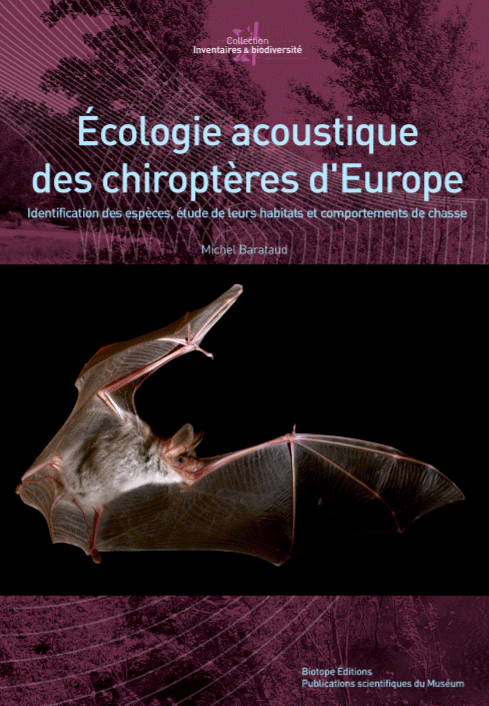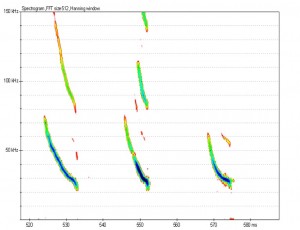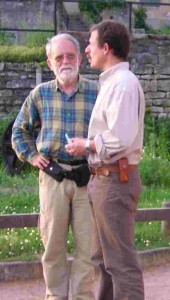BARATAUD, M. 2012. Acoustic Ecology of European Bats. Identification des espèces, études de leurs habitats et comportements de chasse. Biotope Editions, Mèze ; Muséum national d’histoire naturelle, Paris (collection Inventaires et biodiversité), 344 p.
BARATAUD, M. 2015. Acoustic ecology of European bats. Species Identification, Studies of Their Habitats and Foraging Behaviour. Biotope Editions, Mèze; Muséum national d’histoire naturelle, Paris (Inventaires et biodiversité Series), 352 p.
News :
- A web version (signed Roland Jamault) to use the identification graphs ; French page : http://geoeco.fr/ecologie_acoustique/ ; English page : http://geoeco.fr/ecologie_acoustique/en/index.html
- From March 2019 the first English edition (June 2015), was out of print. A second edition (integrating all the new corrections and updates) is available since 15 th June 2020. Order here. (the author apologizes to the readers for the commercial pages included in the beginning of the book; pages 4 to 7 would be at the end, as he would have liked, and according to the request he made to the publisher)
- The first three French editions (2012, 2014 and 2015), have been quickly out of print. A third edition (integrating all the new corrections and updates) is available since October 2020. Order here.
 The acoustic approach to bat research is a new science : a mere 30 years ago no one could claim to identify bat species on the basis of their sonar signals alone. Better ultrasound detectors , and patient research in France, have brought it to a level which has opened up new unsuspected opportunities. The method is based on two innovative approaches :
The acoustic approach to bat research is a new science : a mere 30 years ago no one could claim to identify bat species on the basis of their sonar signals alone. Better ultrasound detectors , and patient research in France, have brought it to a level which has opened up new unsuspected opportunities. The method is based on two innovative approaches :
- the use of chemiluminescent tags on individual bats to track them visually at night through all the natural phases of in-flight foraging movements ;
- the combination of criteria based on an on-the-spot analysis (auditory analysis of the sounds heard) and on a subsequent computer-assisted analysis of the digitized sound recordings (manual measurements combined with type of bat behaviour).
This way of proceeding has several advantages : the observation of bats flying in many different situations clearly shows the considerable intraspecific variability of echolocation signals ; the species identification process takes into account behavioural criteria (deducted from signal rhythm over a complete sequence) ; on-the-spot identifications are highly reliable in more than 80 % of the sound sequences collected in the field. This, and the fact that the observer plays an active role and sees his or her experience valued in return, explain the growing popularity of the method in Europe over the last decade. At first the project focused on the following question : how can an observer in the field, equipped with a bat detector, be sure to identify the bats present in the vicinity ? The publication of « Ballade dans l’inaudible » The Inaudible World (Barataud, 1996) was an answer to this question, the decision to include only criteria based on auditory appreciations had been carefully thought out beforehand. It was at this stage that some of the criteria still essential today, and central to this naturalist's approach were identified : This approach, referred to as the 'acoustic ecology method', characteristically takes into account both the bat's behaviour as reflected in the rhythm of its emissions, and the energy peaks of its signals (audible in time expansion but often undetectable in computer-generated graphical outputs). This stage also optimized the heterodyne technique, and gave particular importance to the observer's capabilities in terms of assessment and interpretation : The observer, endowed with knowledge and experience, becomes much more than a mere computer operator. With the publication of the ensuing booklet + its accompanying CDs (Barataud, 2002), to update The Inaudible World, the auditory method could not be taken any further, It was time to pursue the quest by turning to analysis of the digitized sound files using computer software.  This new book presents a very complete overview of these original findings. An introduction (by Yves Tupinier) explains the physics on which the biological sonar is based and the principles of the technological appliances that convert ultrasounds into frequencies audible to the human ear. The identification criteria of 34 European bat species are given in detail, The book goes on to describe how to study the bats' foraging habitats with a bat detector, using a naturalist's approach, that makes possible ecological diagnoses of the different habitats ; a usefull tool for landscape management. The book also explains, with supporting examples, how the acoustic behaviour of a bat can shed light on its flight environment, its activity, and even its prey. An accompanying DVD illustrates the text, with over 300 sound sequences collected from formally identified individuals flying in natural conditions. The handbook thus contains a wealth of yet unpublished information indispensable to amateur naturalists and professionals involved in the management of protected areas or in environmental impact studies.
This new book presents a very complete overview of these original findings. An introduction (by Yves Tupinier) explains the physics on which the biological sonar is based and the principles of the technological appliances that convert ultrasounds into frequencies audible to the human ear. The identification criteria of 34 European bat species are given in detail, The book goes on to describe how to study the bats' foraging habitats with a bat detector, using a naturalist's approach, that makes possible ecological diagnoses of the different habitats ; a usefull tool for landscape management. The book also explains, with supporting examples, how the acoustic behaviour of a bat can shed light on its flight environment, its activity, and even its prey. An accompanying DVD illustrates the text, with over 300 sound sequences collected from formally identified individuals flying in natural conditions. The handbook thus contains a wealth of yet unpublished information indispensable to amateur naturalists and professionals involved in the management of protected areas or in environmental impact studies.  The book « Acoustic ecology of European bats » was written in collaboration with Yves Tupinier, a bat sonar specialist. Michel et Yves worked together between 1990 and 2018 with a great complicity.
The book « Acoustic ecology of European bats » was written in collaboration with Yves Tupinier, a bat sonar specialist. Michel et Yves worked together between 1990 and 2018 with a great complicity.
Yves Tupinier et Michel Barataud during a training course on bat acoustics, in 2004 (photo S.Giosa).
**********************************************************************
NOTE BY THE AUTHOR : If you find errors in the text of the book or in the contents of the DVD, please let me know by writing to me at the e-mail address below. Your comments, like any additional information produced by my ongoing research work, are available in PDF files; see « update » in « Book & DVD ». These elements will be taken into account by the publisher in subsequent reprints, editions and translations ; For those who have the first French edition of the book, update are available on this web site. Les dernières versions de fichiers sont datées d’août 2024. Pour les fichiers textes « Modifications » : se rapporter à la sous-rubrique correspondant à votre édition du livre ; pour les fichiers Excel « Identification… » et les fichiers sons, aller à la sous-rubrique ” 4e édition” ; dates of creation are indicated in the titles (except for sound files).
Merci infiniment à Jean-François Desmet, Anya Cockle, Sébastien Lutz, Julien Rousseau, Luck Martin-Bouyer, Pierrette Nyssen, Stéphane Petit, Thomas Darnis, Julian Pichenot, Benoît Reber, Jean-Do Vrignault pour leurs remarques pertinentes sur le contenu du livre : they are the living proof that it is being read with the closest attention. Furthermore, Bravo and thank you to those who have contributed to the improvement of identification Excel files : Roland Jamault ; Jean-François Godeau ; Julien Cornu ; Thierry Disca ; Thomas Darnis, Sébastien Laguet, Frédéric Malgouyres et Olivier Vinet (réseau “Mammifères” ONF) ; Caroline Lehmann.
Michel BARATAUD michel.barataud1@orange.fr
